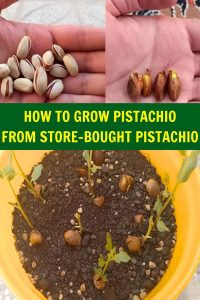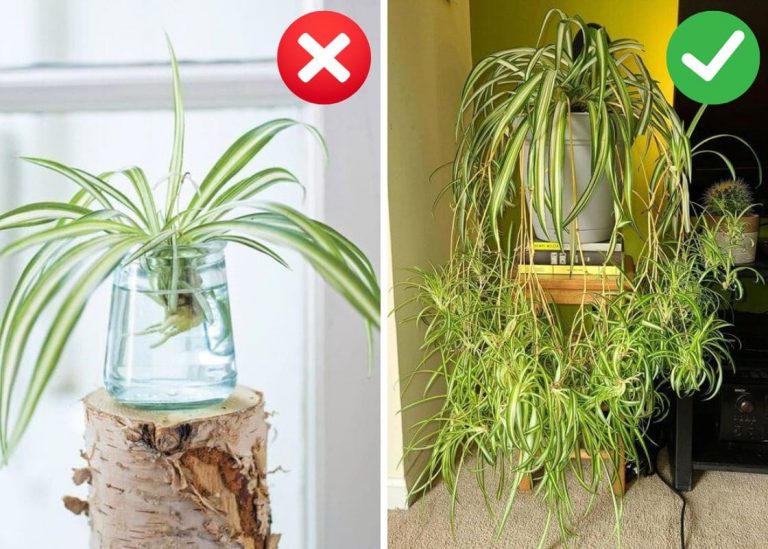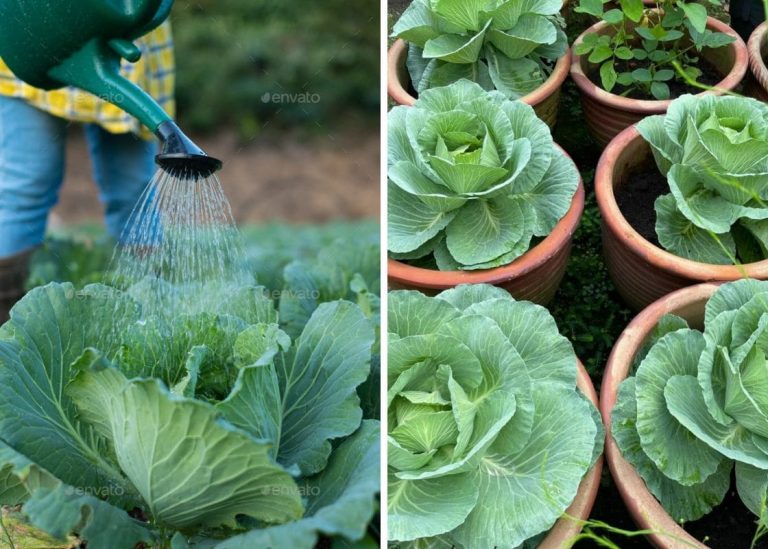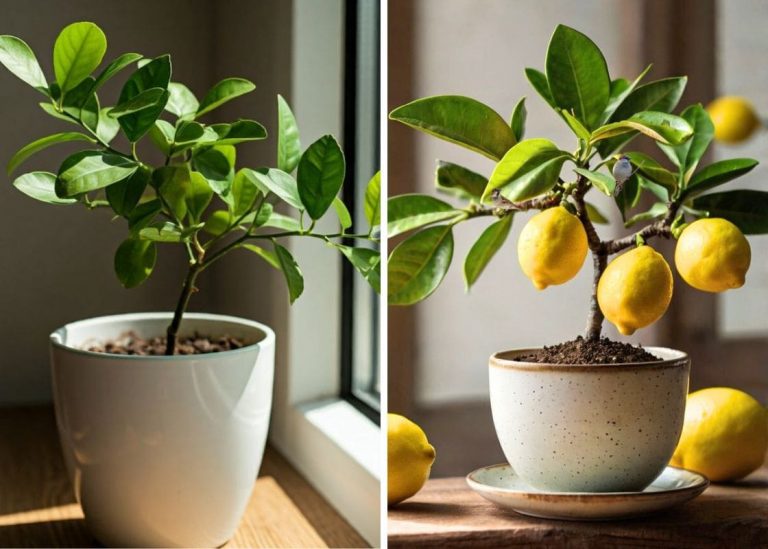Full Guide on Growing Pistachio Trees From Store-Bought Pistachios
A few summers ago, my son stood at our kitchen counter popping open pistachio shells, making a cheerful little pile of cracked halves while asking, “Can you actually grow a tree from these?” I didn’t know the answer right away. But curiosity has a funny way of turning snacks into science—and by the following weekend, we had raw pistachios soaking in a mason jar and a growing sense of excitement.
That’s how it always begins for me—not with grand plans or elaborate tools, but with a question, a handful of kitchen scraps, and a patch of sunlight near the window. Pistachios, I’ve learned, are slow companions. They don’t rush to sprout, and they certainly don’t rush to fruit. But if you’ve ever wanted a challenge that also feels like a quiet conversation with nature, growing pistachios from store-bought nuts offers just that.
Not every nut will cooperate, and not every seedling will thrive—but there’s a real joy in coaxing life from something most people toss in a bowl. In this guide, I’ll walk you through every step of the process, from selecting viable seeds to nurturing saplings, with honest lessons from my own attempts, moments of quiet awe, and practical tips gathered from growers I admire.
It’s not a fast process. But in the world of gardening, sometimes the best things take their sweet, slow time.
Step 1: Choosing the Right Pistachios for Planting
Not all store-bought pistachios are ready for growing—most are roasted, salted, or pasteurized, which means they’re no longer living seeds. That first lesson came quickly when I tried to sprout a handful from my pantry stash and ended up with exactly zero sprouts.
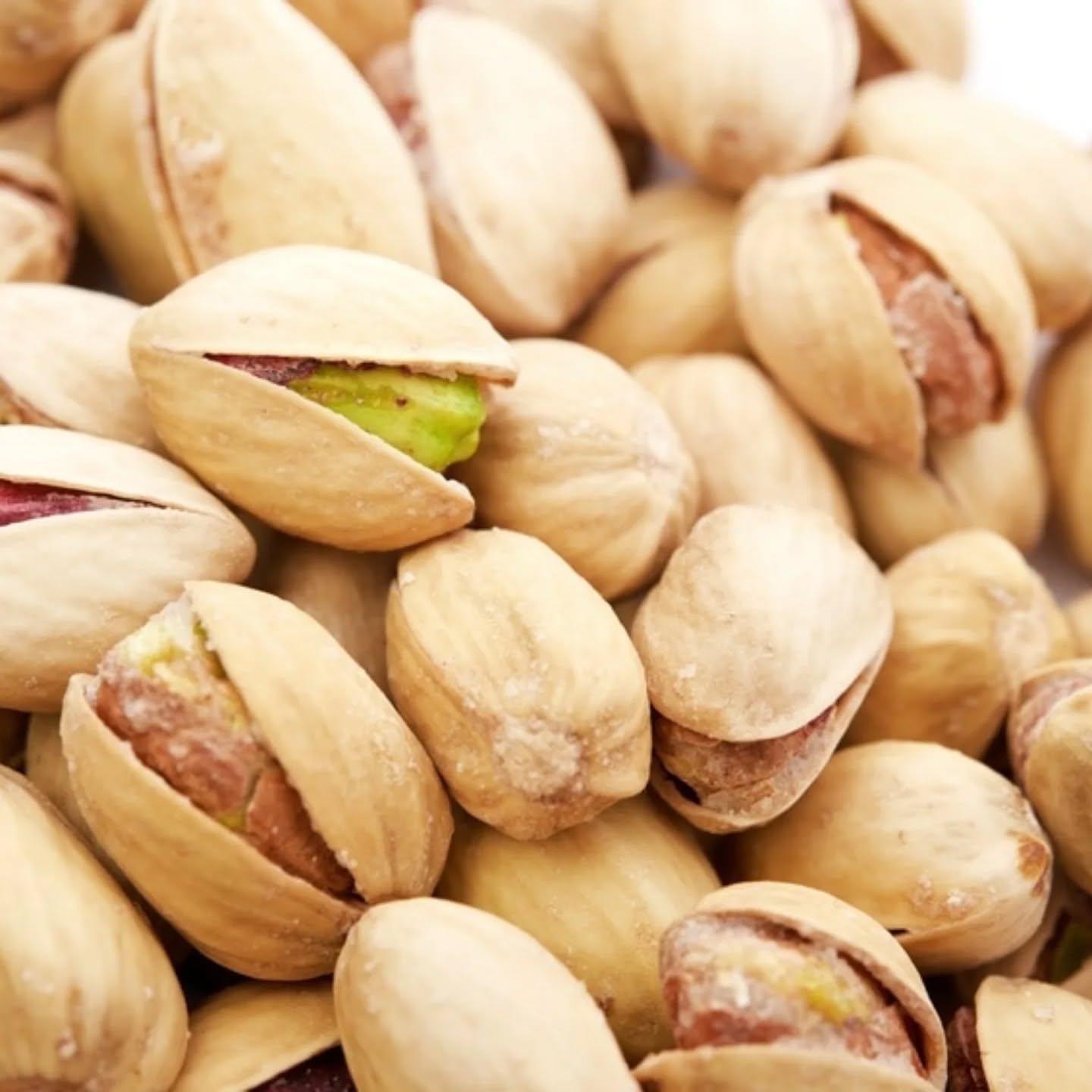
What worked for me was tracking down raw, unprocessed pistachios. Health food stores sometimes carry them, but I had the most luck at a small Middle Eastern grocer tucked between two bakeries in town. Look for packaging that says “raw and unpasteurized” and double-check that the nuts are still in their shells.
To test for viability, I soaked a dozen in water overnight. The ones that sank had better chances of sprouting; those that floated were often empty inside or long dead. It’s not a perfect test, but it gave me a head start on sorting the hopefuls from the hopeless.
Step 2: Preparing the Seeds for Germination
The first time I tried cracking pistachio shells, I broke more than I saved. I was too impatient—snapping them open like snack nuts instead of coaxing them gently. It taught me early on that growing pistachios starts with slowing down.
What finally worked was gently using a nutcracker until the shell split just enough to expose the seed—no more. The goal isn’t to remove it entirely, just to let moisture in and give the seed a head start.
After cracking, I wrapped the seeds in a damp paper towel, tucked them in a zip-lock bag, and placed them in the fridge. This mimics winter, a process called stratification. Every few days, I’d check the towel—keeping it damp but not soggy, replacing it if it got slimy or dry. A spray bottle helped keep conditions just right.
After about five weeks, a few seeds showed signs of life—tiny white roots peeking through like curved little commas. Out of twelve, four sprouted. Not bad for something most people toss in a snack bowl.
Lessons learned:
-
Don’t pack seeds too tightly—mold spreads fast in close quarters.
-
Label your bag with the date. Six weeks is easy to miscount.
-
Too much condensation? Let the bag breathe for an hour.
Watching that first seed split open was quiet magic. A whisper of progress in a cold fridge. Completely worth the wait.
Step 3: Planting Pistachio Seeds
Once those pale little roots began to curl, it was time to give them real soil. I used small nursery pots, but I’ve seen friends use deep yogurt cups or tall tin cans—anything that allows for proper drainage. Pistachios hate soggy roots, so the mix matters. I combined potting soil with sand and perlite to keep things loose and airy.
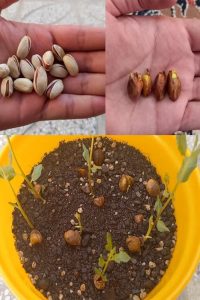
Each seed went about an inch deep, root pointing down, nestled in gently like a promise. I kept the soil slightly moist and placed the pots near a sunny window. They need warmth to settle in, so I used a heating mat for a few days when the mornings dipped cold. It made a noticeable difference—shoots showed up in just over a week.
You don’t need a fancy setup, but consistency helps. Warmth. Moisture. Light. That’s it.
Tips from the process:
-
Use containers that are deep enough for the taproot to grow—pistachios send them down early.
-
Avoid overwatering. Wait for the top inch of soil to dry before reaching for the watering can.
-
If your light’s weak, a small grow light can make all the difference, especially in winter.
Seeing those green shoots rise from a once-hardened seed is one of those garden moments that sticks with you. It’s quiet, but it feels like success.
Step 4: Caring for Young Pistachio Seedlings
When those tiny green stems began rising through the soil, I felt like I had won something quietly beautiful. They were fragile—barely the size of my finger—but determined. It didn’t take long before one leaned toward the window, searching for light like it already knew what it needed.
Pistachio seedlings grow deep roots early on. One of mine nearly outgrew its starter pot within a few weeks. I learned the hard way that shallow containers only slow them down. The healthier ones were always those given a bit more space and left undisturbed. I started using deeper pots right away—simple, breathable ones with good drainage.
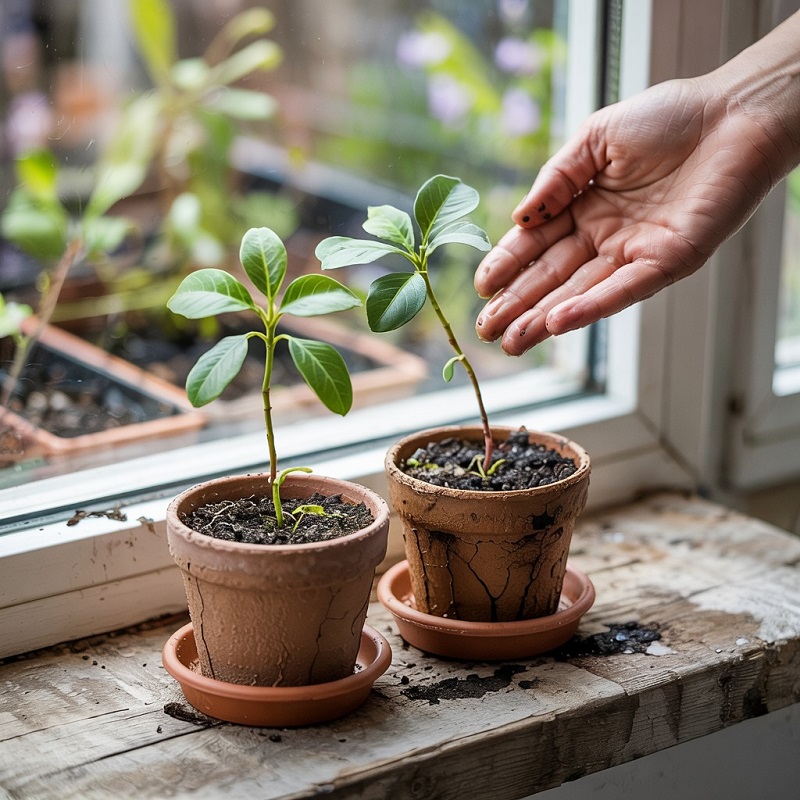
Strong sunlight made a noticeable difference. I kept mine near a bright window where they soaked in six to eight hours of natural light. Those that didn’t get enough light stayed leggy and pale. When the clouds rolled in, a small grow light filled the gap.
Watering became a balancing act. At first, I was overly cautious—then overly generous. What worked best was letting the top inch of soil dry completely before watering again. Overwatering, even just a little, caused the leaves to curl and fade. These trees may be small now, but they’re desert creatures at heart.
A few helpful takeaways:
-
Use deeper pots to allow that early taproot to grow strong and undisturbed.
-
Don’t crowd the seedlings—each one needs its own space to stretch.
-
Let light guide their growth. Weak sunlight means weak plants.
-
Resist the urge to water too often—let the soil feel dry to the touch first.
They may not demand much attention, but when those tiny leaves unfurl under the sun, they feel like a gentle reminder that progress doesn’t always shout. Sometimes it just grows quietly, leaf by leaf.
The Long Wait: Growing to Maturity
By the third year, I’d stopped wondering when the tree would fruit. It wasn’t giving me nuts, but it was giving me something else entirely—patience I didn’t know I had. Each season brought small changes, the kind that only mattered if you were paying attention. A thicker stem. Deeper roots. Leaves that held their color longer into fall.
I once visited a garden in California where a woman in her seventies showed me her pistachio grove—half a dozen trees spaced along a slope, tall and quiet like they were listening to the land. She told me they were almost fifteen years old before they gave her a real harvest. She didn’t mind. “You grow pistachios for the next people,” she said, “not just for yourself.” That stayed with me.
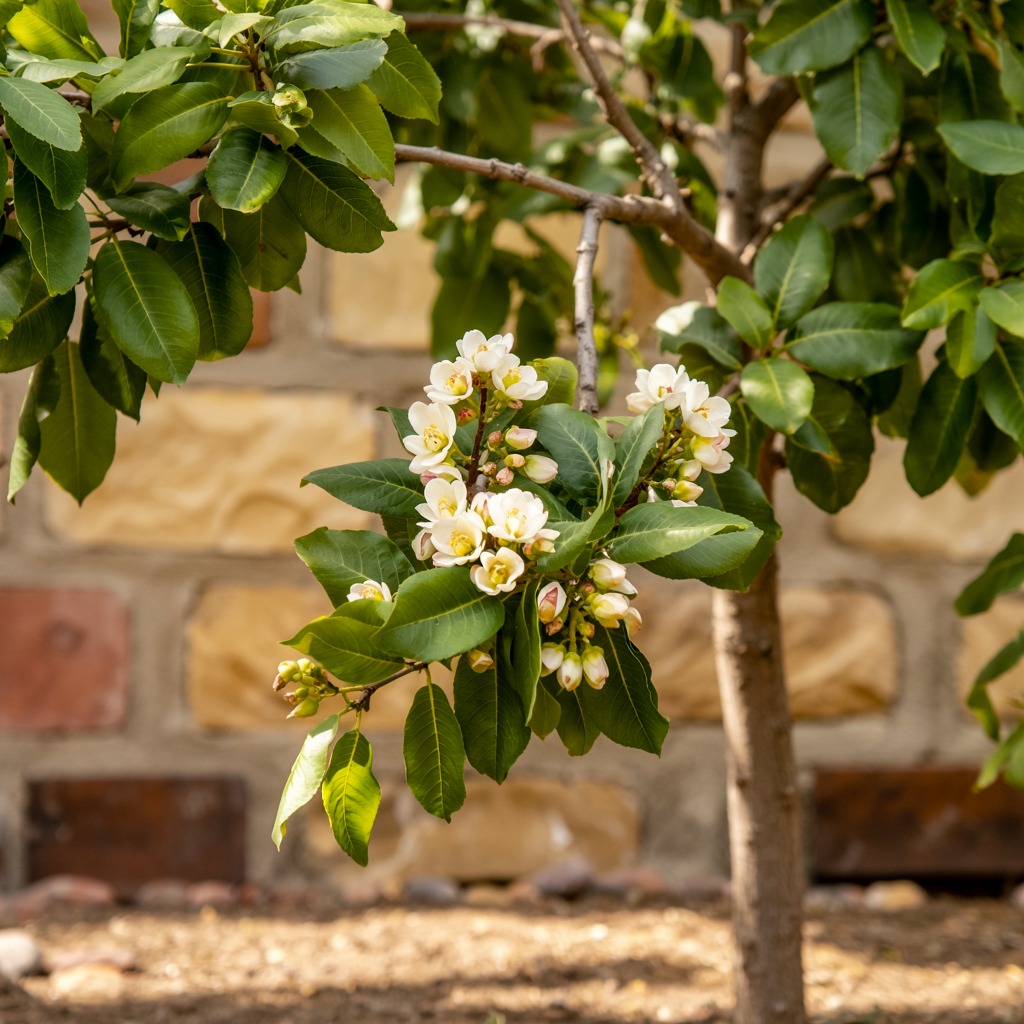
At home, mine grew slowly. Some years, it barely stretched taller. Others, it surprised me with a burst of new growth in late spring. I started thinking of it less like a crop and more like a companion. It didn’t rush. It didn’t ask for much. And maybe that’s what made it feel so grounded in my garden—like an anchor, quietly holding space while the rest of the yard came and went in fast waves.
I never knew which seedlings would turn out to be male or female, and I didn’t worry about it anymore. There was a kind of freedom in not knowing, in letting the tree decide what it wanted to be in its own time. That mystery became part of the reward.
By the time someone asks if I’ve harvested any nuts, I usually smile and shake my head. “Not yet,” I say. But inside, I know I’ve already been given more than I hoped for—just in slower, quieter ways.
Transplanting to a Permanent Location
By the time my tallest seedling hit twelve inches, it was clear the little starter pot wasn’t enough anymore. The roots pushed against the bottom, leaves looked a little too cramped, and it was ready for more.
I moved it into a deeper container filled with sandy, well-draining soil—one I could lift if needed, because winters here aren’t exactly gentle. For those lucky enough to live where summers are long and winters stay mild, planting directly in the ground is ideal. Just be sure the spot gets full sun and doesn’t hold water after rain.

A friend in Arizona planted hers directly along her fence line, and it took off like it had always belonged there. Mine sits by the sunniest corner of our patio, in a tall pot I can wheel indoors when the frost creeps in.
A little more space. A little more sun. And suddenly, it grows like it means it.
Common Challenges and How to Overcome Them
Only a few of my seeds ever sprouted—and fewer grew strong. That was humbling, but not unexpected. Pistachios are picky from the start.
Humidity caused a few leaf spots during summer. Spacing out the pots and watering only at the base helped keep things in balance. They don’t like wet leaves or crowded corners.
And then there’s the biggest challenge of all: the waiting. Years can pass before fruit appears, and some trees may never produce at all. Still, they grow. And that quiet, steady progress—leaf by leaf—has become the real reward for me.
Final Thoughts
Growing pistachios from a seed feels less like a project and more like a quiet partnership. You give time, space, and care—without guarantees. And in return, you get slow beauty, deep roots, and the kind of satisfaction that only comes from nurturing something with no rush at all.
It may take years before your tree gives you fruit, but long before that, it gives you presence. Something green to tend through seasons. A reason to pause by the window and notice what’s changed.
Even if you never crack open your own homegrown pistachio, the process leaves you with something just as valuable—proof that growth doesn’t need to be fast to be meaningful. Try it. Watch it. Let it grow beside you.
